Pasture Champions: Clare Hill and Silas Hedley-Lawrence, FAI Farms, Oxford 2/4
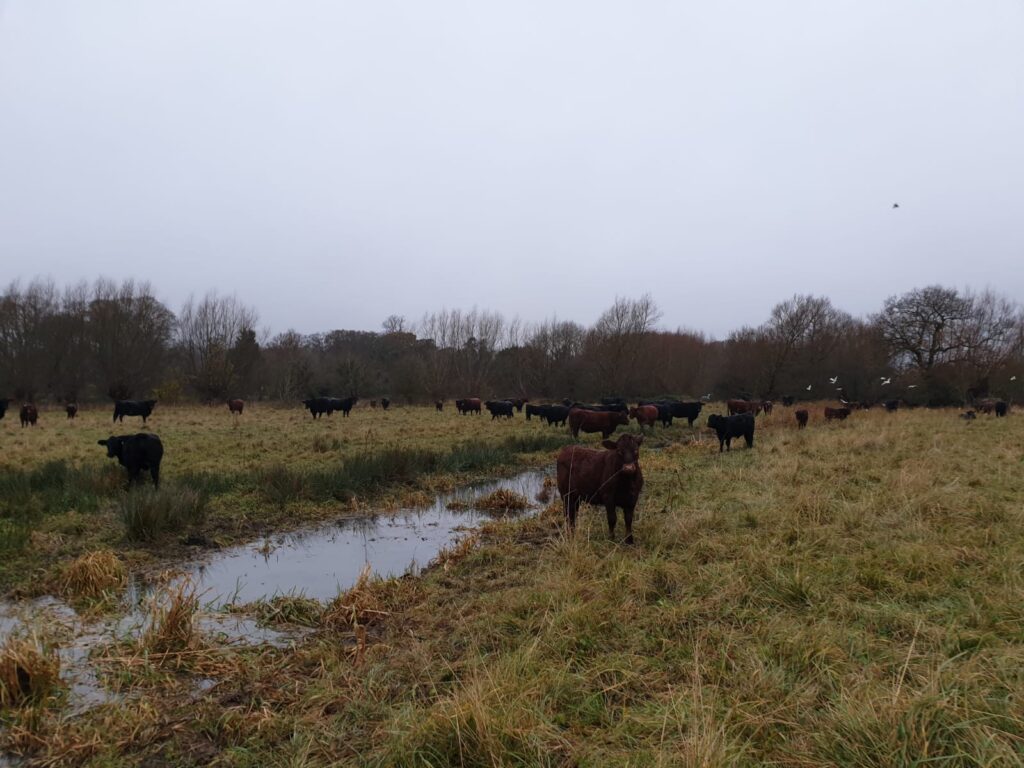 Out-wintering the cattle, a farm ditch
Out-wintering the cattle, a farm ditch
What do you do to encourage this biodiversity and the lessons you have learned/would like to share
It's not all about out-wintering, that was just a kick start for us.
Our second challenge here is what we used to call “burning off in the summer” but now recognise it as actual drought - not enough water for the plants to be growing optimally.
And yet we're on a flood plain and rainfall is increasing each year. So where is all the water going? This is when we stated to look at our soil health and realise that our grazing management was integral to so many element of our farming.
In our first year of leaving all our grass to grow long before we grazed it as part of the Adaptive Multi-Paddock grazing methodology in 2020, we and our landlord struggled with the messy look of the farm but local people were starting to post on social media about the noise of the insects they were hearing and seeing when walking the footpaths around the farm.
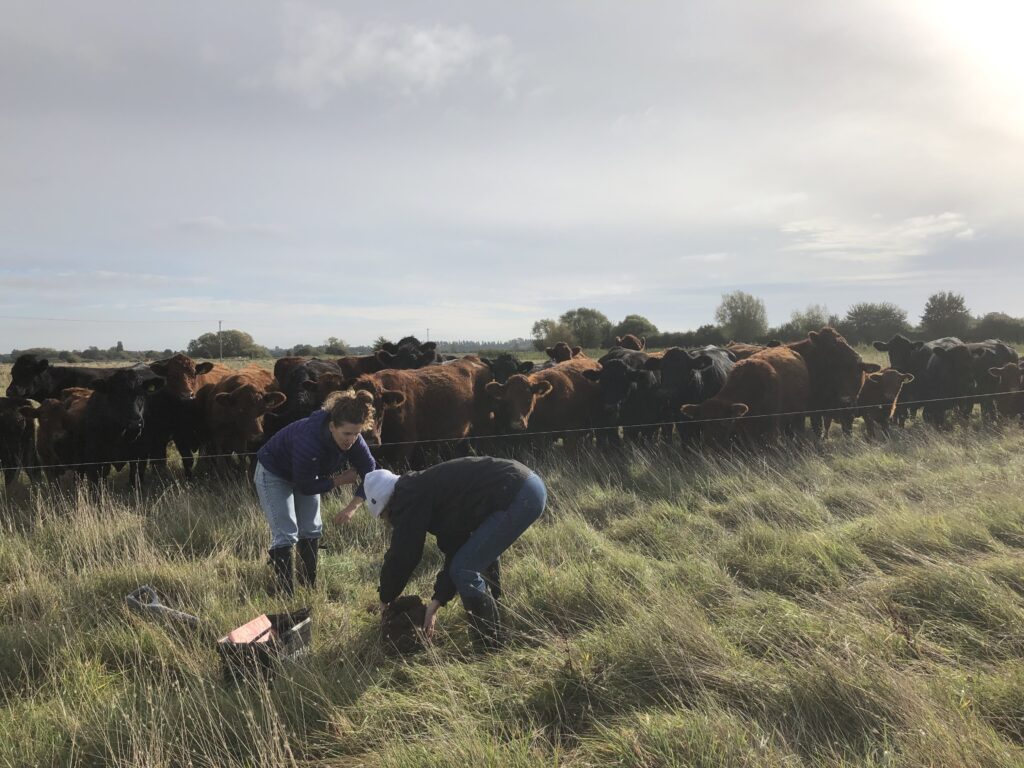 Adaptive Multi Paddock Grazing image copyright Annie Rayner FAI Farms
Adaptive Multi Paddock Grazing image copyright Annie Rayner FAI Farms
Then came the hares. A couple who have lived on the farm since they married 60 years ago say that they've never seen hares on this farm, but they also complain about the messy look of the farm now!
It's interesting watching people make the connection to the better things they are seeing coming from what looks like mess and disorganisation.
One retailer I've worked with in the past has a “Tidy Farm Score” and I often reflect on how we would score on that now.
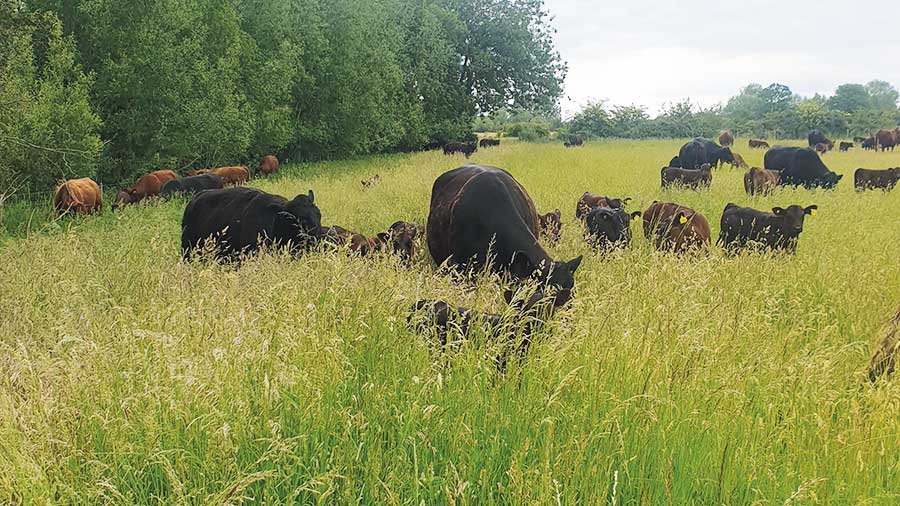 Long grass grazing
Long grass grazing
When it comes to birds, we are lucky that we do see exciting things from time to time like curlew feeding or breeding on our flood plain meadows. But in the main we are home to pigeons, crows and magpies.
Having watched films like Biggest Little Farm, I have hope that as we increase the diversity on the farm, the generalist species will not find conditions quite so favourable and we'll be building back habitat for other more specialist and diverse species. In fact, I think this is starting as I'm seeing and hearing more green woodpeckers.
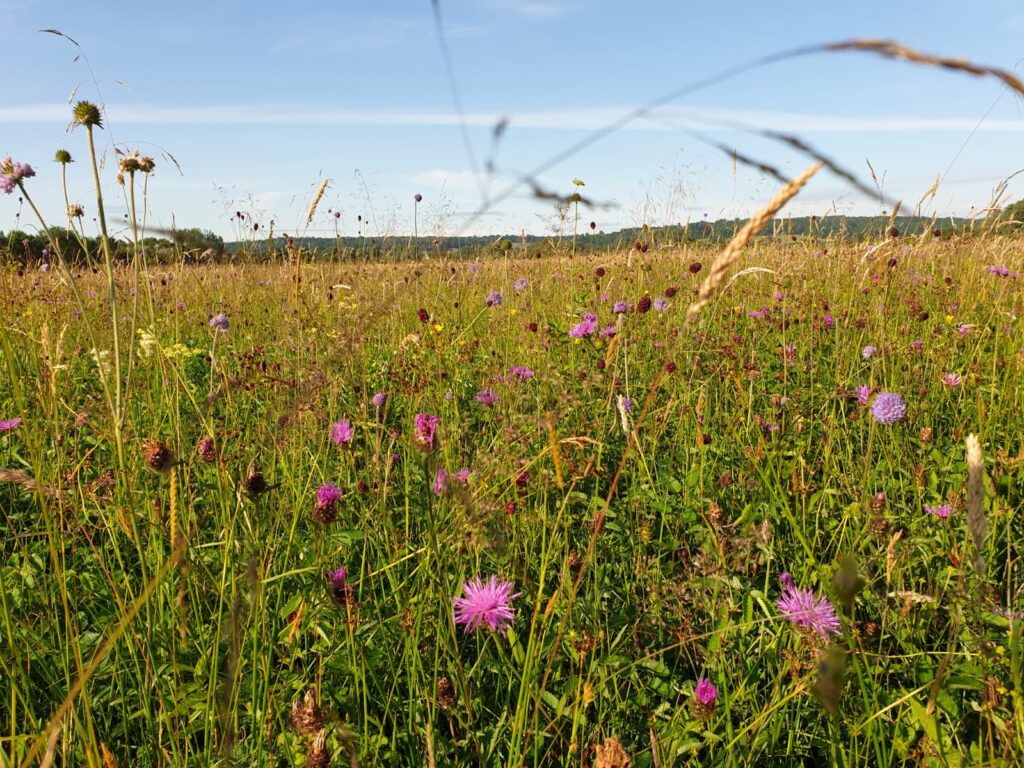 Meadow
Meadow
We've always had a barn owl or two here, I think because we have had chickens and therefore rodents. We have plans to expand populations with provision of more boxes and hopefully our more diverse system will provide them with the food they need.
Most recently are our cattle egrets. Rare in the UK and only bred for the first time here in 2020 at Blenheim Palace which is just down the road. Last weekend when the cattle were grazing along side the road, there were scores of bird watchers parked up with long lens cameras.
Buzz amongst them was high and I got asked 'can you leave the cattle here so we can keep coming?' I replied: 'You may keep coming but the Egrets wont. They live with our cattle, feeding off the insects they're kicking up with their mouths and feet as they graze'.
And this only happens when they move onto fresh pasture every two days or so. When it was set stocked, we didn’t get those insect levels.
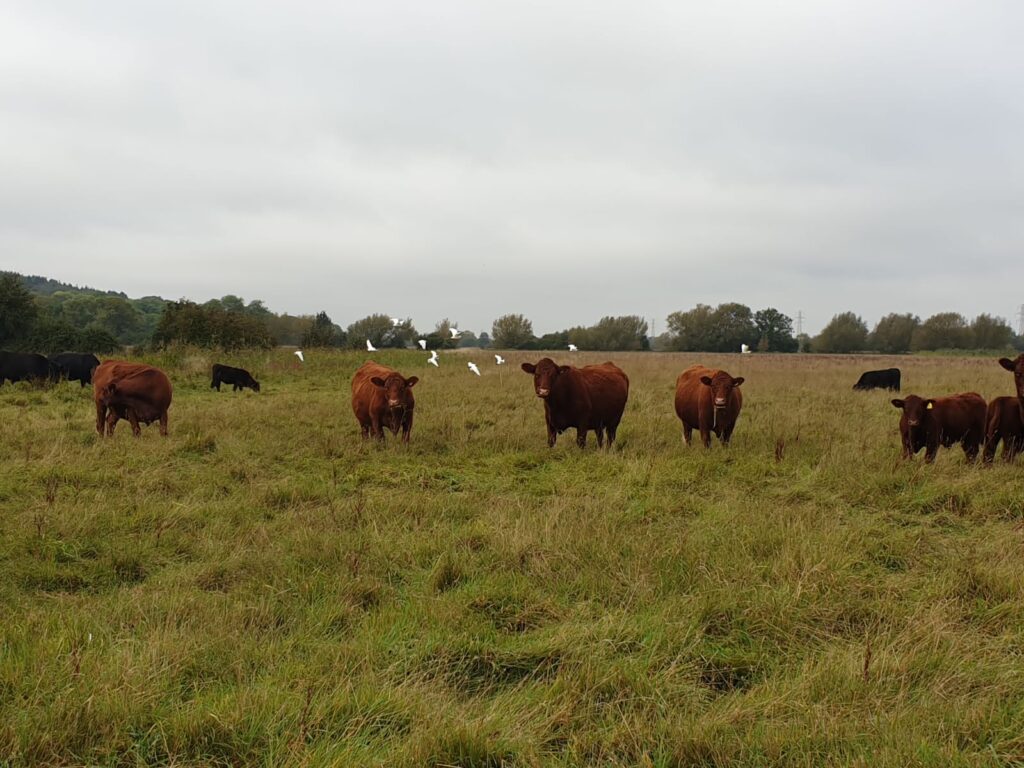 Cattle egrets
Cattle egrets
Initially we thought that the Egrets were only with the cattle when they were by the river but they've clocked our grazing system and now we have an Egret group with each cattle group and they follow the cattle, no matter where we move them on the farm.
This is a magical symbiosis. I have no idea how long they will stay but if they help eat flies in the summer then we will all be eternally grateful!



